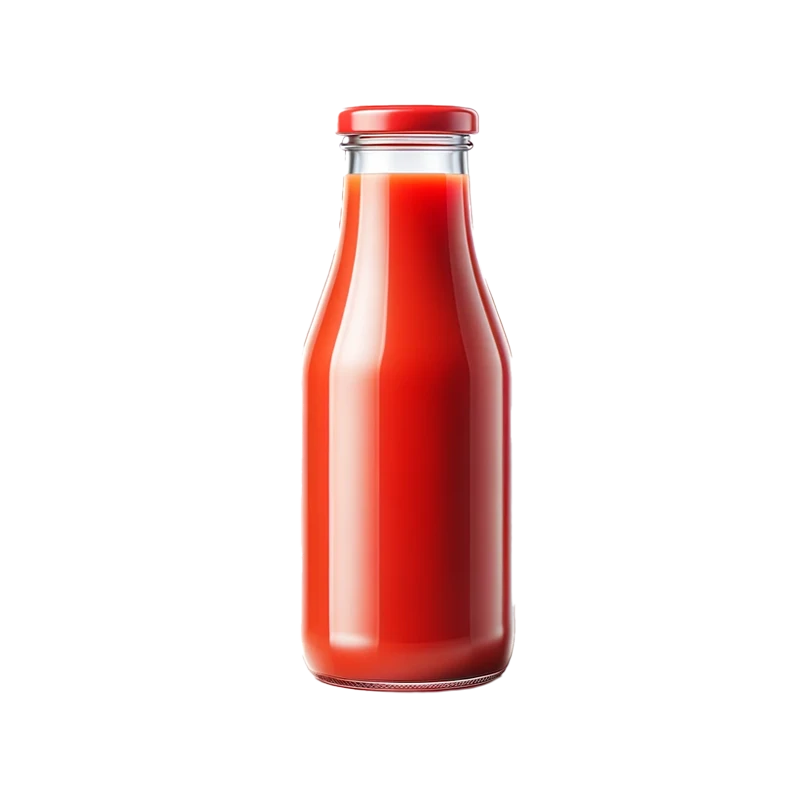Tomato Juice — Nutrients, Health Benefits, And Shopping Tips

Written by Listonic Team
Last update on September 4, 2024
Tomato juice nutrients
Nutrition facts
Amount per 100 g
Calories
🔥 17 kcal
| Nutrition per: 100 g | Value | % Daily Value* |
|---|---|---|
| Carbs | 4 g | 1.45% |
| Fiber | 0 g | - |
| Sugars | 3 g | 6% |
| Glycemic Index | 38 | - |
| Protein | 1 g | 2% |
| Sodium | 5 mg | 0.22% |
| Total Fat | 0 g | - |
*The % of Daily Value (DV) tells you how much a nutrient in a serving of food contributes to a daily diet. 2,000 calories a day is used for general nutrition advice.
17
🍏 Low-Calorie Foods
38
🟢 Low Glycemic Index
Tomato juice facts & tips
Health benefits
- Rich in vitamins and minerals such as Vitamin C, potassium, and folate, which support overall health and well-being.
- High in antioxidants like lycopene, which help protect the body from free radicals and reduce the risk of chronic diseases.
- Supports heart health by improving cholesterol levels and reducing blood pressure due to its potassium content.
- Hydrating due to its high water content, helping to maintain fluid balance in the body.
Health risks
- High sodium content in many commercial tomato juices, which can contribute to hypertension and increased cardiovascular risks when consumed frequently.
- Potential for acidity which can exacerbate symptoms of acid reflux or heartburn in sensitive individuals.
- Potential for added sugars in some commercial tomato juices, which can contribute to weight gain, tooth decay, and increased risk of diabetes.
- Risk of contamination with pesticides if the tomatoes used are not sourced from organic suppliers, which can pose health risks.
How to choose tomato juice
Tomato juice should be vibrant and thick, with a deep red color and a fresh tomato aroma. The flavor should be rich and slightly sweet, indicative of ripe tomatoes.
Do not purchase tomato juice that has separated or has an off, metallic taste, as this suggests it has been improperly processed. Juice that is overly thin or has an artificial flavor should also be avoided, as it will not provide the refreshing tomato experience you expect.

How to store tomato juice
Tomato juice should be stored in the refrigerator after opening, kept in its original bottle or a sealed container. Refrigeration preserves its flavor and freshness for up to a week.
Room temperature can spoil tomato juice. Don't use dirty utensils to pour it, which can introduce bacteria. Shake well before drinking and check for off smells or flavors. Proper sealing ensures longevity and taste.
✅ Extra Tip
How long does it last?
Tomato juice can last for 5-7 days in the refrigerator once opened. Unopened, it can last for 6-12 months when stored in a cool, dark place.
What to do with leftovers?
Leftover tomato juice can be used in a variety of savory dishes. Use it as a base for a soup, stew, or chili, where it adds depth and richness to the broth, or mix it into a bloody mary cocktail for a spicy drink. Tomato juice is also great when used as a cooking liquid for rice, grains, or pasta, where it infuses the dish with flavor.
Use tomato juice in a marinade for meats like chicken, pork, or beef, where its acidity helps tenderize the meat. If you have a lot of tomato juice, consider freezing it in portions for future use, or making a batch of tomato sauce or soup by simmering it with herbs, garlic, and onions. Tomato juice can also be blended into a salsa or gazpacho for a refreshing summer dish, or used as a base for a vegetable juice blend with carrots, celery, and peppers. For a quick snack, enjoy tomato juice chilled with a dash of hot sauce, or use it as a dip for breadsticks or crackers.
👨⚕️️ Medical disclaimer
Discover products from other categories
Listonic Team
Fact-checked
Our editorial team checked this article to make sure it was accurate at the time of publishing it.
Get the top-rated shopping list app on your phone!







